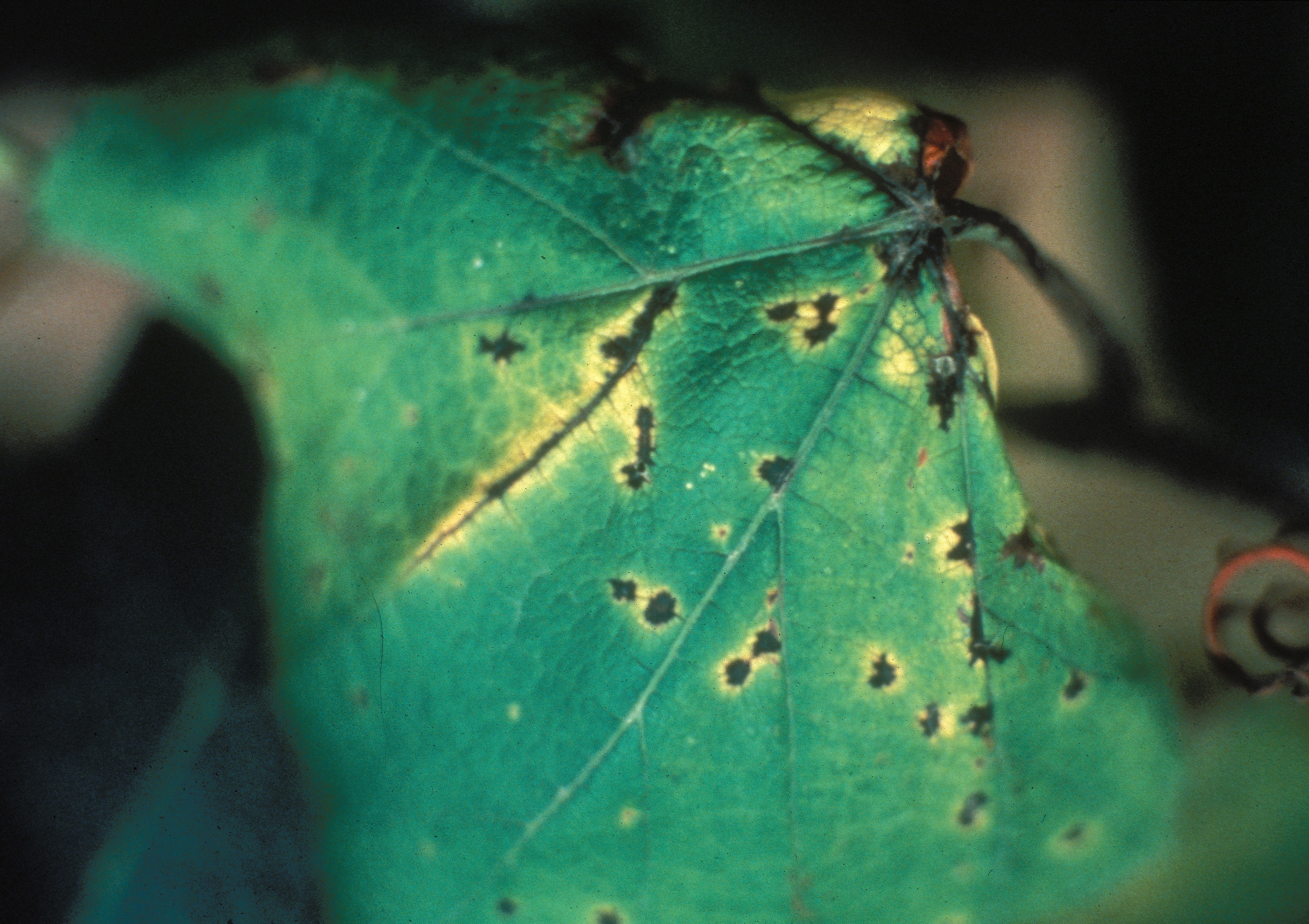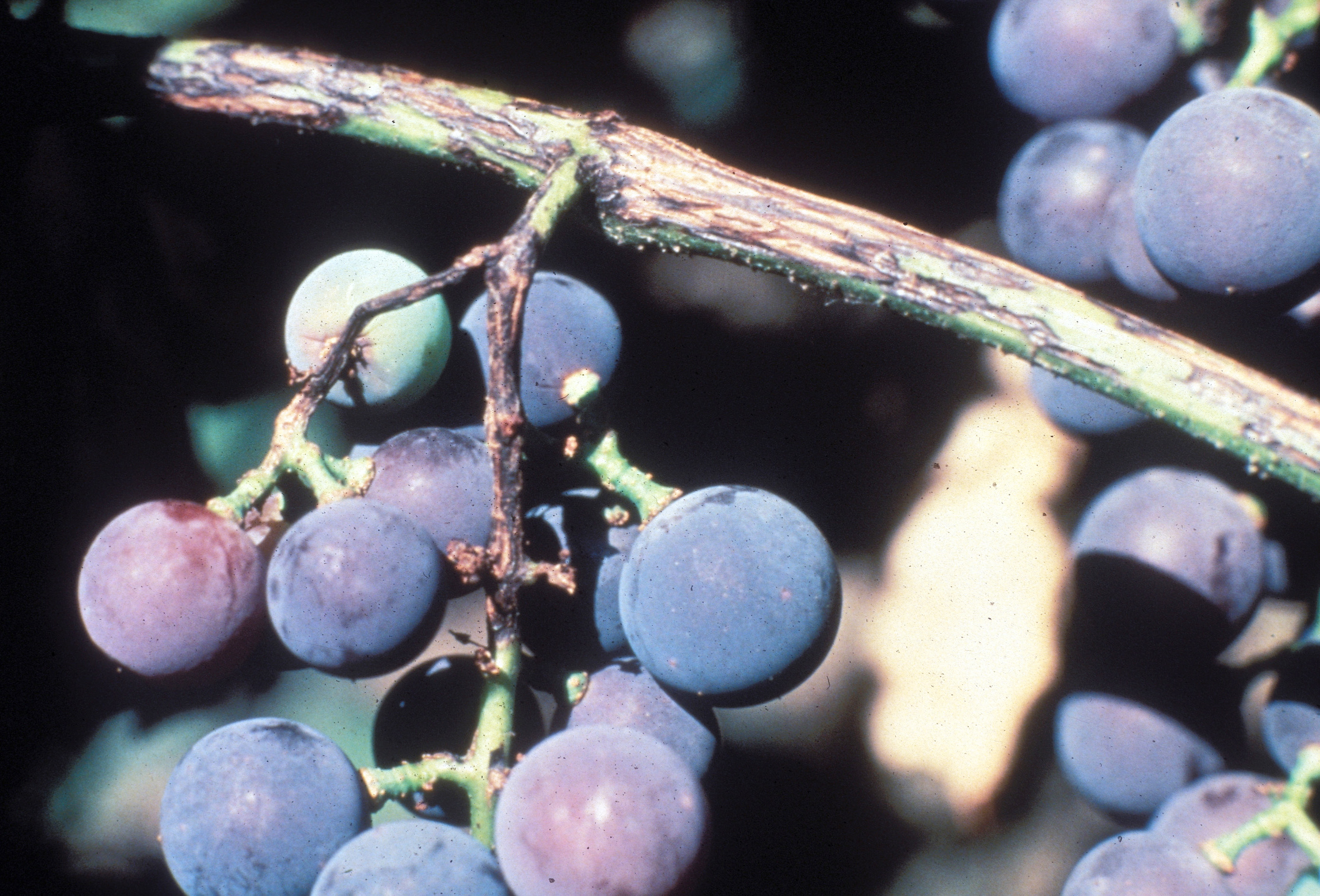Phomopsis Cane and Rachis Rot of Grapes
Return to Diseases
Phomopsis cane and rachis rot (Diaporthe spp. and Phomopsis spp.) is a fungal disease that produces lesions in the first three or four basal internodes of shoots; girdled shoots die. Visible black fruiting structures (pycnidia) that contain spores (conidia) develop in these shoot infections. Conidia from lesions are spread by rain to developing shoots and leaves, as well as to cluster stems (rachises) and fruit. Stem, shoot, and rachis infections appear as dark brown or black streaks that coalesce; cortex tissue cracks, becoming rough and brittle. Fruit infections occur within the first weeks after bloom, but symptoms do not become apparent until berry ripening. Shoot infections may continue through the season if conditions are wet; spread usually occurs within a single canopy rather than from vine to vine. Fruit symptoms appear as a light brown rot with visible black pycnidia; berries shrivel. Overwintering occurs on older, infected shoots.

Phomopsis foliar symptoms.
(Photo: University of Georgia, Bugwood.org)

Phomopsis lesions on vine and rachis.
(Photo: University of Georgia, Bugwood.org)
Management:
- Practice proper sanitation (remove infected canes; destroy prunings or discard away from plantings).
- Increase air circulation to encourage drying of plant tissues (pruning, thinning, spacing, managing weeds).
- Apply fungicides (from cluster development until 3 to 4 weeks after bloom).
